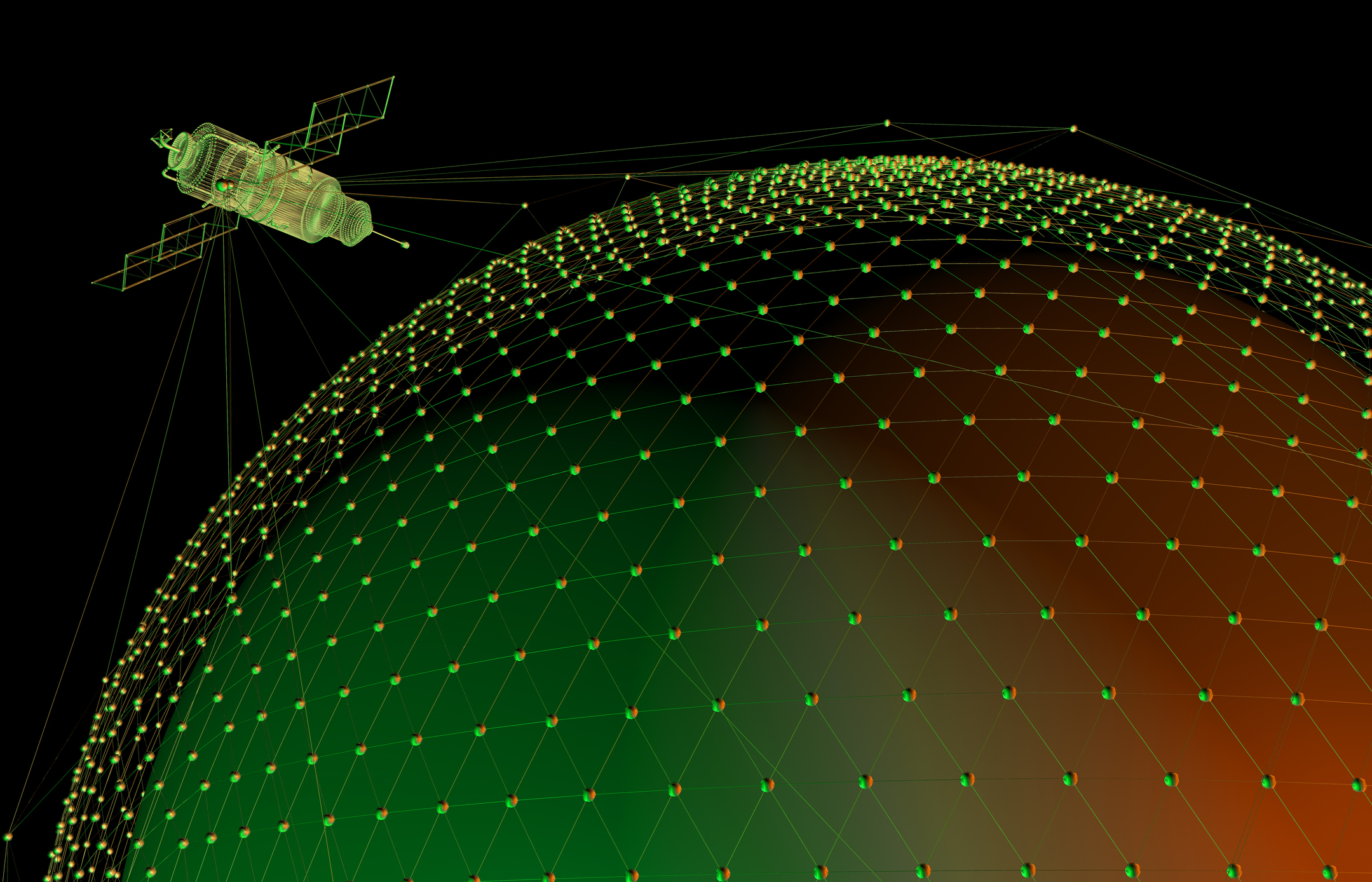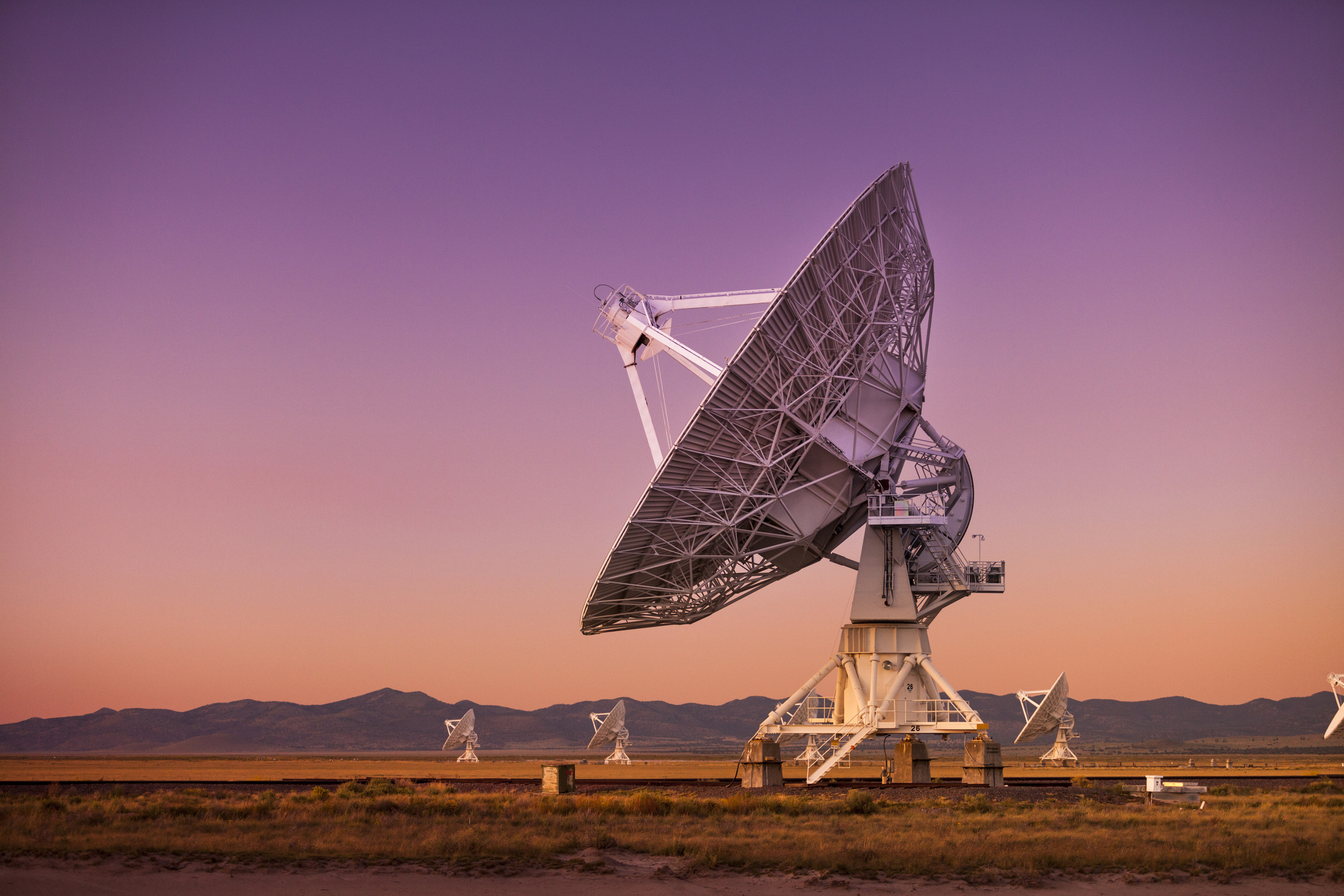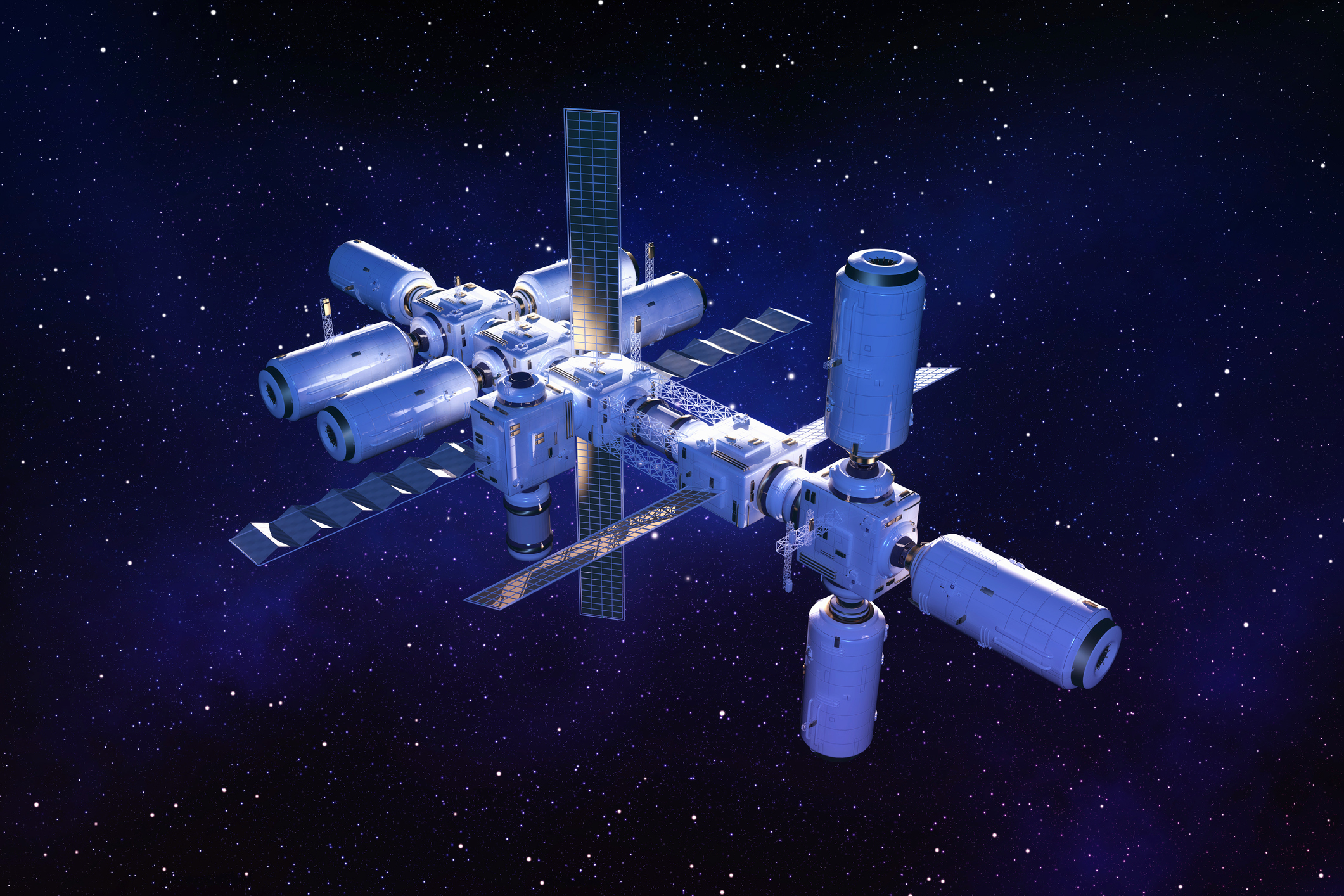The Rise of Space-Based C4ISR
StartThroughout human history, space has been a source of fascination, sparking awe and commanding reverence.
Space has advanced our civilization in more tangible ways. The moon was used to create the first calendars, the sun allowed us to quantify the hours in a day, and stars helped explorers navigate the globe. And space continues to spur human innovations in more recent times, with scientific discoveries made in space allowing us to learn more about our own planet.
During the last several decades, space has increasingly transformed into a battlefield. Building on the momentum of the Space Race, the U.S. has shifted its focus to investing in C4ISR (Command, Control, Computer, Communications, Intelligence, Surveillance, and Reconnaissance). What does this look like in practice and what can we expect ahead? Read on to learn more about the past, present, and future of C4ISR -- and its implications for the 'final frontier' of American innovation.
1/8
Spies in the Sky
One tool the U.S. military has used to gather intelligence on its adversaries is the reconnaissance satellite.

Starting with the CIA’s Corona program in the 1950s, the United States has employed orbiting satellites and high-altitude aircraft to photograph points of interest in enemy territory. These tools allow for an immense area to be surveyed from a safe distance, improving the efficiency of missions.
On 16 March 1955, Headquarters Air Force...officially ordered the development of an advanced reconnaissance satellite to provide continuous surveillance of ‘preselected areas of the earth’ in order ‘to determine the status of a potential enemy’s war-making capability.Mark Erickson, Lieutenant Colonel, U.S. Air ForceThroughout the Cold War, overhead reconnaissance satellites and spy planes brought attention to the USSR’s nuclear buildup in Cuba, helping the United States dispel Nikita Khrushchev’s missile gap ploy. In the 1990s, the stealth plane F-117 Nighthawk aided U.S. missions in the Persian Gulf and Yugoslavia. More recently, overhead reconnaissance provided critical images of Osama bin Laden’s Abbottabad compound. Much of the United States’ other overhead reconnaissance capabilities and missions are still classified, and the portfolio will remain a critical aspect of the military’s C4ISR apparatus.
Contents
2/8
Artificial Intelligence & Satellites
In addition to simply taking photographs, the military’s newest reconnaissance satellites use artificial intelligence (AI) to analyze and sort captured images. Once this process has gone through the satellite’s system, the sorted images are transmitted to ground stations on Earth. Here, machine learning allows the stations to compare the new images to a plethora of others in the station’s database. The compiled images in the database act as a control group, and differences found in the new images (such as a new structure being built or a plane following an unusual fight pattern) are brought to the attention of decision makers.

At the same time, new technology like the European Space Agency’s PhiSat artificial intelligence chip allows satellites to quickly filter through images and discard the ones that aren’t useful. This capability is helpful when dealing with natural disruptions to captured images; cloud cover, for example, renders many images useless. With AI, satellites can be programed to recognize clouds and transmit only the cloud-free images to Earth, saving military analysts valuable time.
Contents
3/8
Satellite Communication Systems: Past
Timely and reliable communication is a vital aspect of all U.S. military missions. Over the past few decades, the United States has relied on four different satellite systems to fulfill this role.
Efforts to create a military communications satellite first began in 1960. The first satellites were launched in June 1966, and by July 1967, nineteen satellites made up the system then called the Initial Defense Satellite Communication System (IDSCS). Data and photographs transmitted by the IDSCS system were first used in military operations during the Vietnam War.

During this time, satellite technology improved. In 1971, the first of sixteen new satellites were launched under a new system called the Defense Satellite Communications System II (DSCS II). Advantages over the IDSCS system included increased communications privacy and compatibility with ground-portable units. The military’s third system, DSCS III, came under development in 1975. Between 1982 and 2003, fourteen satellites were launched as part of this network.
Contents
4/8
Satellite Communication Systems: Present & Future
Today, the U.S. military relies on the Wideband Global SATCOM (WGS) network. The Department of Defense ordered WGS’s first two communication satellites in 2002, launching the first satellite in 2007 and providing communication coverage over the Pacific Ocean. Two years later, the second satellite was put into orbit, expanding the communicative reach over the Middle East and Central Asia.
Each WGS satellite is digitally channelized and transponded. These characteristics provide a quantum leap in communications capacity, connectivity and flexibility for U.S. military forces and international partners...Just one WGS satellite provides more SATCOM capacity than the entire legacy Defense Satellite Communications System (DSCS) constellation.Air Force Space Command Public Affairs OfficeWGS is an international system, with Australia, Canada, Denmark, Luxembourg, the Netherlands, and New Zealand also investing in the satellite constellation. The system’s tenth satellite was launched on March 15, 2019, and an eleventh is set to be completed by 2023.

Looking forward, the Pentagon is already planning the next communication satellite system. Spearheaded by the recently-created Space Development Agency (SDA), the system will “include development of deterrent capability, space situational awareness, a resilient common ground-based space support infrastructure, command and control systems, and artificial intelligence-enabled global surveillance.” Additionally, the system is expected to be comprised of seven mission-enhancing “layers,” including deterrence, navigation, and battle management.
Another goal of this next program is to develop a network that has lower financial and security risks than its predecessors. In order to achieve this, the SDA is exploring the use of small, smart satellites.
Contents
5/8
Small, Smart Satellites
While both the physical size and cost of satellites have decreased over the years, these smaller satellites are not (yet) equipped with features at the same level as those employed by larger satellites. This shortfall, however, can be negated if a group of hundreds or thousands of small satellites are launched as one network. Under this system, if one small satellite is damaged or knocked off course, the cost is minimal, and the system as a whole won’t suffer. The same cannot be said of the older, larger satellites—a damaged WGS satellite is costly both in terms of financials (the eleventh WGS satellite will cost the U.S. government $605 million) and functionality of the current satellite network.
[The] proliferation of small satellites can increase the risks of individual satellites colliding, on purpose or accidentally. But the shift from large, expensive models means that replacing individual satellites will become easier and that losing an individual satellite will be less problematic, no matter what the cause of a loss.Meghan Bartels, Senior Writer, Space.comIn order to make the small satellite plan a reality, Defense Advanced Research Projects Agency (DARPA) created Blackjack—a program designed “to loft a network of 20 prototype [small] spy satellites to low Earth orbit (LEO) in 2021.”
If adopted into the SDA’s future satellite network, the Blackjack prototype would first focus on “surveillance and communication” missions. However, “there have been talks about broadening the scope to more complex assignments such as space-based battle management.”
Contents
6/8
Unprotected Satellites
Big satellites are big targets that, if damaged, have big and inimical consequences. While a future system will likely make use of small and smart satellites, the current WGS network is comprised of ten (soon to be eleven) large, unprotected satellites—meaning adversaries need only damage one or two of them in order to dramatically disrupt the system.

The biggest threats to the WGS come from China and Russia. Both nations have ground-based anti-satellite weapons capable of destroying satellites in low earth orbit. Beyond that, Beijing and Moscow are currently developing what they call “peaceful” spacecraft. These machines are purportedly being made in order to “reduce the growing amount of orbiting debris and to refuel, repair, and refresh China’s and Russia’s existing fleet of satellites.” Designed with robotic arms, these machines can easily be utilized to remove parts from U.S. satellites, empty fuel, and break antennae and solar panels.
Unlike ground-launched missiles designed to knock out orbiting satellites, which give hours of warning before they can hit key targets in geosynchronous orbits, the spacecraft (i.e., satellites) China and Russia are developing can destroy an intolerable number of our critical satellites with little or no warning.Brian G. Chow & Henry Sokolski, SpaceNewsDARPA is currently building the United States' own satellite repair machines. Once launched, these—or similar—machines could also serve as “bodyguards” for U.S. satellites. With this defense, the WGS would be protected and able to serve the needs of the U.S. military until the future SDA satellite network is completed.
Contents
7/8
Satellite Hacking
Another risk to current and future satellites is hacking. Carried out by foreign governments, non-state entities, or even individual actors, cyber attacks are relatively inexpensive endeavors. On top of that, tracing a cyber attack back to its source often proves difficult, if not impossible.
The importance of satellites make them a critical part of any nation's infrastructure and attacking those satellites a strategy that most nations need to consider.Robert Lemos, Dark ReadingOver the past decade, both China and Russia have launched cyber attacks against U.S. and NATO-affiliated satellites. Because both nations are rapidly incorporating cyber attacks into their military arsenal, the threat of similar instances will only increase.
The information collected and transmitted by satellites is vital to the success of U.S. military operations—68 percent of U.S. munitions, for example, were guided utilizing space-based means during the U.S. invasion of Iraq in 2003. On top of that, the U.S. military relies heavily on GPS systems to move troops and supplies. In short, an effective cyber attack on a critical U.S. satellite could have detrimental repercussions on the battlefield.

In order to protect its satellites from hacking, the Pentagon should focus on risk-reduction frameworks through communication networks and supply chains. Moreover, the United States needs to explore protective technology, such as the Chinese development of communications protected by quantum cryptography.
As cyber threats and capabilities continue to proliferate and evolve, so should the United States’ ability to deflect and counterattack—and this means shifting satellite protection of a central priority of U.S. C4ISR.
Contents
- Start Over
8/8
Space Force & Military Space Station
President Trump announced on June 18, 2018 the creation of a new military branch: the Space Force. The Pentagon is planning for the new branch, and a Department of Defense proposal was sent to Congress earlier this year. Once established, the Space Force will be the first U.S. military branch created since the Air Force in the 1940s.
Currently, most security-related space projects and missions are handled by the National Reconnaissance Office (NRO) and the Air Force Space Command. By creating a space-centric military branch, the United States is signaling to the world that space missions are at the forefront of its future security plan.

Beyond Space Force, calls for a military space station have echoed through the halls of the Pentagon. This space station would begin as an “unmanned orbital outpost to support space experiments and operations.” However, future plans include the “capability to dock with unmanned and manned spacecraft” and support human life—just like the International Space Station.
Contents

